Search the Special Collections and Archives Portal
Search Results
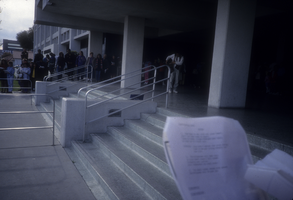
Slide of protesters at a prayer vigil outside of the Las Vegas Federal Building, January 13, 1991
Date
1991-01-13
Archival Collection
Description
Color image of anti-nuclear testing protesters at a prayer vigil held outside of the Las Vegas Federal Building.
Image
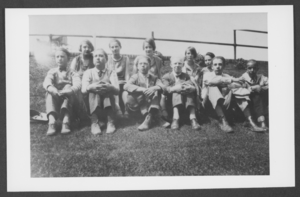
Photograph of Caliente Grade School, Caliente, Nevada, circa 1926
Date
1926
Archival Collection
Description
Black and white photo of Caliente Grade School graduating class of 1926. Front row, L- R: 1. Virgil Wedge, now a Reno attorney, 2. Burton Wadsworth, deceased uncle of Mrs. Bob Broadbent, 3. Lawrence Pace, son of Vilate and Frank Pace, 4. Lester Denton, 5.(?), 6.(?); Back row, L- R: 1. Alpha Forsyth, 2. Mattie Keeler, 3 Rosie Usin, 4. Mary Reid, 5. Hilma Burke.
Image
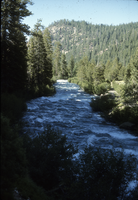
Slide of the Truckee River, circa 1970s
Date
1970 to 1979
Archival Collection
Description
The location that the photograph was taken is unknown, but is most likely in Nevada. The Truckee River is a stream in the U. S. states of California and Nevada. The river flows northeasterly and is 121 miles (195 km) long. The Truckee is the sole outlet of Lake Tahoe and drains part of the high Sierra Nevada, emptying into Pyramid Lake in the Great Basin. Its waters are an important source of irrigation along its valley and adjacent valleys.
Image
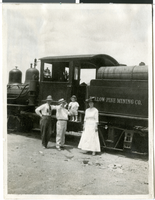
Postcard of a locomotive engine, Las Vegas, circa 1930s
Date
1930 to 1939
Archival Collection
Description
Black and white image of two unidentified men, a woman, and a child standing in front of a locomotive engine named "Old Fort Collville." Transcribed from the back of the postcard: "Dave Coons, Railroad buff, identified this engine as yellow pine mining company. Shay number one Locomotive. Locomotives were made in Lima, Ohio. It has a home-made fuel bunker, having been transformed to an oil burner. Identified by E. Patrick on May 17, 1982."
Image
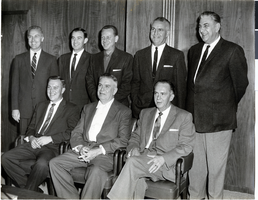
Photograph of men in suits, Las Vegas, circa 1915-1935
Date
1915 to 1935
Archival Collection
Description
Men in business suits. From left to right (front): Art Smith, Ernie Cragin, Nelson Conway. (Back): Perry Thomas, Norrison Beatty, Bernard (Bret) Swanson, Bruce Beckley, Wayne Kirch.
Image
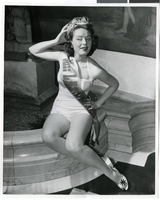
Photograph of Virginia Page, Miss Las Vegas, Sands Hotel, June 2, 1957
Date
1957-06-02
Archival Collection
Description
Nineteen year old Virginia Page from Brighton, England, winner of Meet Me In Las Vegas contest. Page, as Miss Las Vegas, won a trip to Las Vegas for a week starting June 2, 1957. She can be seen here posing in a bathing suit sitting on the edge of a fountain.
Image
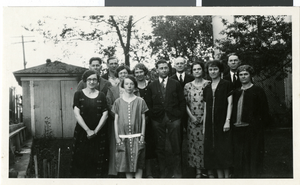
Photograph of a group including Fred Wilson, F. B. Hubbard, and Ida Hubbard, circa 1930s
Date
1930 to 1939
Archival Collection
Description
Fred H. Wilson (second row, far left); F. B. Hubbard (back row, center); Ida Hubbard (next to him, wearing pearls).
Image

Photograph of Maurine Wilson on her 92nd birthday, March 11, 1990
Date
1990-03-11
Archival Collection
Description
From left to right, a picture of Maurine Wilson and Elma Leland posing together. This picture was taken on Maurine's 92nd birthday on March 11, 1990.
Image
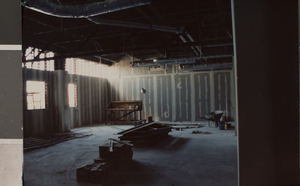
Photograph of the interior of the Rod Lee Bigelow Health Sciences building, University of Nevada, Las Vegas, circa 1991-1992
Date
1991 (year approximate)
Archival Collection
Description
An interior view of the Rod Lee Bigelow Health Sciences (BHS) building under construction.
Image
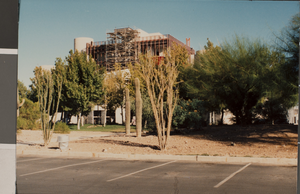
Photograph of the Rod Lee Bigelow Health Sciences building and parking lot, University of Nevada, Las Vegas, October 4, 1991
Date
1991-10-04
Archival Collection
Description
Construction of the Rod Lee Bigelow Health Sciences (BHS) building and the parking lot in front of it.
Image
Pagination
Refine my results
Content Type
Creator or Contributor
Subject
Archival Collection
Digital Project
Resource Type
Year
Material Type
Place
Language
Records Classification
